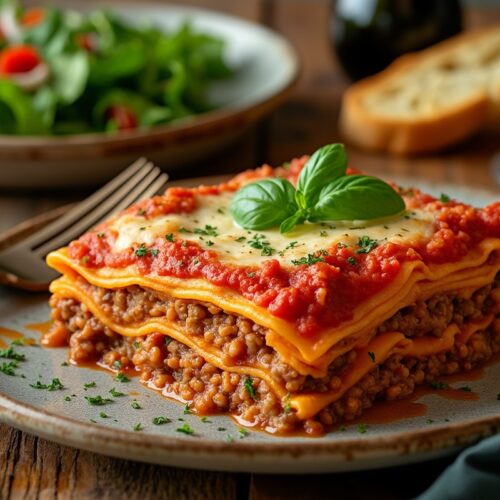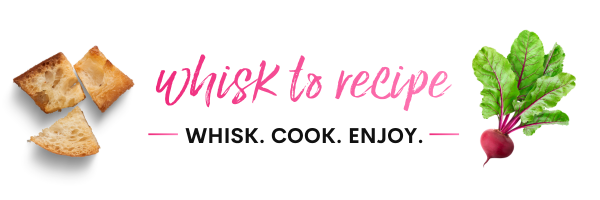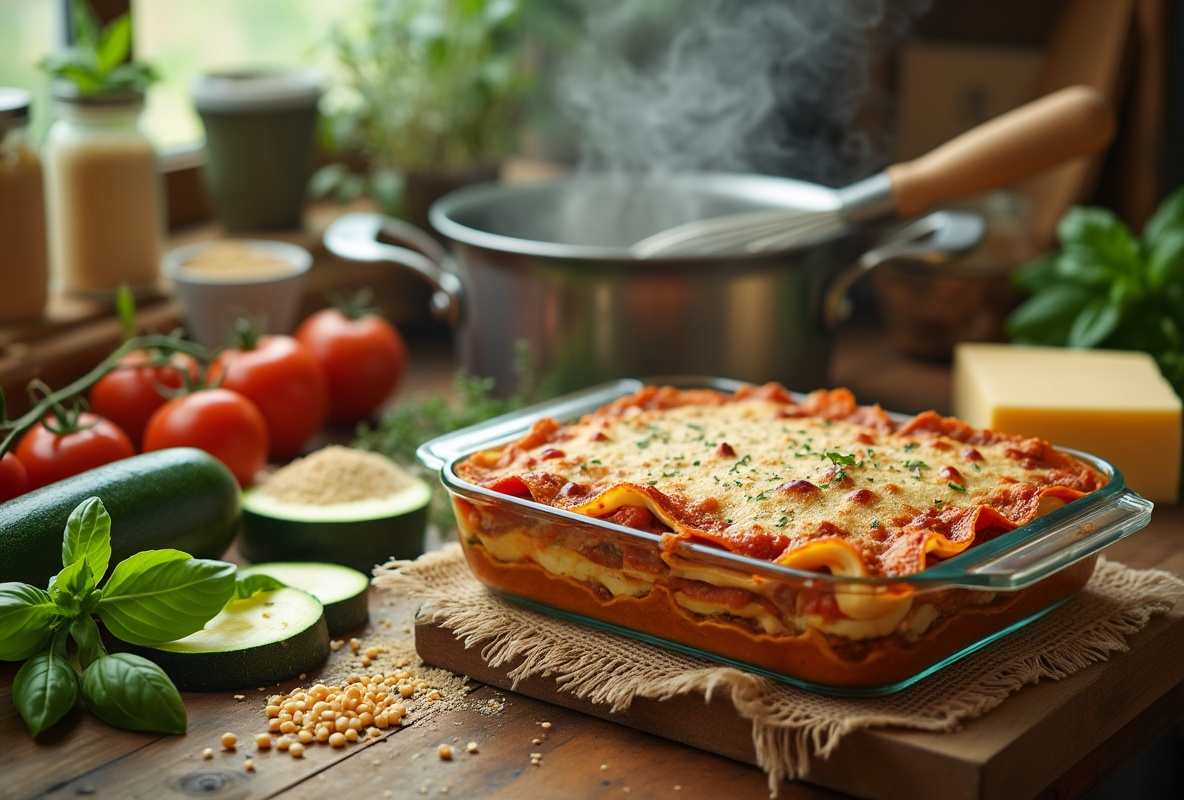Understanding Vegan Lasagna: A Delightful Twist on a Classic
Have you ever wondered how to create a delicious vegan lasagna that still achieves that classic texture and flavor without using traditional eggs? The secret lies in a vegan lasagna egg substitute, which captures the essence of the classic dish while being entirely plant-based. Vegan lasagna allows us to enjoy comforting layers of taste and texture, and because it supports various dietary preferences, it’s gaining popularity among both vegans and non-vegans. Let’s explore how this delightful twist transforms a beloved classic into a vegan-friendly masterpiece.
The Role of Traditional Egg Ingredients in Lasagna
When it comes to making lasagna, eggs often play a crucial role in binding and adding richness to the dish. Think of the classic lasagna, where eggs are mixed into the ricotta cheese layer, providing a creamy, cohesive texture that holds everything together. Eggs help in cementing the layers. They ensure that each slice comes out picture-perfect, with ingredients neatly stacked rather than sliding off onto the plate. But their contribution doesn't stop there. Eggs also lend a subtle depth of flavor, enriching the savory notes. In traditional lasagna recipes, eggs are somewhat the unsung heroes, making sure that every mouthful is not only delicious but also structurally sound. As pivotal as they are in traditional lasagna, if you're venturing into vegan lasagna territory, understanding their role can help you discover the right substitutes, ensuring you don’t miss out on that classic lasagna experience we all love. For alternatives beyond eggs in lasagna, exploring the best meat substitutes for lasagna can also transform your vegan dish into something extraordinary.
Exploring the Vegan Lasagna Egg Substitute: A Recipe Guide
When it comes to creating vegan lasagna, finding the perfect egg substitute is essential. Traditional lasagna relies on eggs for binding and texture, but there are several plant-based options that can brilliantly replace this ingredient without compromising flavor or consistency. Some popular choices include flaxseed meal, chia seeds, and silken tofu. Flaxseed meal mixed with water forms a gel-like consistency that works well in holding ingredients together. Chia seeds also have a similar gelling property and provide an additional boost of omega-3s. Silken tofu is another excellent option, offering a creamy texture and subtle taste that complements other flavors in the dish. Each of these substitutes not only helps in binding but also adds its own nutritional benefits to the dish. For those curious about the broader scope of vegan cheeses and other dairy alternatives, check out this in-depth guide on vegan cheese ingredients.

Vegan Lasagna
Equipment
- 9x13-inch baking dish
- Large skillet
- Blender or food processor
- Mixing bowl
- Saucepan
- Whisk
- Knife
- Chopping board
Ingredients
- 12 sheets lasagna noodles oven-ready or cooked
- 2 tbsp olive oil
- 1 medium zucchini diced
- 1 red bell pepper diced
- 2 cups baby spinach chopped
- 3 cups marinara sauce store-bought or homemade
- 1.5 cups raw cashews soaked in warm water for 2 hours
- 1 cup unsweetened almond milk
- 3 tbsp nutritional yeast
- 2 tbsp lemon juice freshly squeezed
- 1 tsp garlic powder
- 1 tsp onion powder
- 1 tsp dried oregano
- 1 cup vegan mozzarella shredded
Instructions
- Preheat your oven to 375°F (190°C).
- In a large skillet over medium heat, heat olive oil and sauté diced zucchini and red bell pepper until tender, about 5 minutes.
- Add chopped spinach to the skillet and cook until wilted, about 2 minutes. Remove from heat and set aside.
- In a blender or food processor, combine soaked cashews, almond milk, nutritional yeast, lemon juice, garlic powder, onion powder, and a pinch of salt. Blend until smooth and creamy to make the cashew ricotta.
- Spread a thin layer of marinara sauce at the bottom of a 9x13-inch baking dish.
- Add a layer of lasagna noodles on top of the sauce, followed by a layer of cashew ricotta, a layer of sautéed vegetables, and another layer of marinara sauce.
- Repeat the layering process (noodles, ricotta, vegetables, sauce) until all ingredients are used, ending with a layer of marinara sauce on top.
- Sprinkle shredded vegan mozzarella evenly over the top layer.
- Cover the baking dish with aluminum foil and bake in the preheated oven for 30 minutes.
- Remove the foil and bake for an additional 15-20 minutes, or until the top is golden and bubbly.
- Let the lasagna rest for 10 minutes before slicing and serving.
Notes
Top Plant-Based Ingredients for Replacing Eggs in Lasagna
As someone who loves experimenting in the kitchen, I'm excited to share my favorite plant-based ingredients that work wonders as egg substitutes in vegan lasagna. These ingredients not only bind everything together but also add their own unique flavors. Here are the top contenders:
-
Silken Tofu: Silken tofu is incredibly versatile. It has a creamy texture perfect for blending into a smooth base that holds layers of lasagna together. Plus, it's full of protein!
-
Chia Seeds: When mixed with water, chia seeds form a gel-like consistency that mimics the binding properties of eggs. They're subtle in flavor and packed with omega-3s, making them a nutritious choice.
-
Flaxseeds: Similar to chia seeds, ground flaxseeds mixed with water create a thick, egg-like consistency. It's a great source of fiber, helping enhance the nutritional value of your lasagna. Learn more about meat substitutes in lasagna to further elevate your vegan recipes.
- Aquafaba: The liquid from canned chickpeas, aquafaba, is a surprising yet effective egg replacement. Whip it up and fold it into your recipes for a light and airy texture.
These ingredients prove that with a bit of creativity, it's easy to make a delicious and satisfying vegan lasagna.
Nutritional Benefits of Vegan Egg Alternatives
When I create vegan lasagna, exploring the range of egg substitutes opens the door to added nutritional benefits. Plant-based ingredients like flaxseed meal or chia seeds offer a fantastic alternative. Not only do they act as a binding agent (similar to traditional eggs), but they also bring their own set of nutrients to the table. For instance, flaxseeds are high in omega-3 fatty acids, which are known for supporting heart health.
Another brilliant substitution is silken tofu. It’s packed with protein, making your dish not just delicious but also satisfying. Aquafaba, the liquid from canned chickpeas, is another interesting option. It’s low in calories and works wonders in adding moisture to layers of pasta and plant-based cheese.
Moreover, these egg alternatives are often lower in cholesterol and saturated fats compared to eggs, aligning with a heart-healthy lifestyle. So, while you're savoring each bite of your flavorful vegan lasagna, you're also nourishing your body with wholesome, guilt-free ingredients!
Tips for Perfecting the Texture and Flavor of Vegan Lasagna
Creating the perfect vegan lasagna is an art, and getting the texture and flavor just right requires a little finesse. Here are some tips to help you master this delicious dish:
-
Balance Your Flavors: Start by layering your flavors thoughtfully. Use a mix of fresh basil, garlic, and a hint of lemon juice for a fresh, zesty kick. Don’t forget to season each layer with salt and pepper to enhance the taste.
-
Perfecting Texture: Achieve a creamy, rich texture by using a blend of cashews and nutritional yeast for the "cheese" sauce. Let the cashews soak well before blending to ensure a smooth consistency. For more insights, check out these vegan cheese ingredients that can add depth to your recipe.
-
Layer Wisely: When assembling, alternate between layers of veggies, sauce, and noodles. This creates a delightful contrast in every bite. Sautéed mushrooms or spinach can add both texture and umami.
-
Bake with Care: Cover your lasagna for the first half of the baking process to lock in moisture, then uncover to let the top golden brown.
-
Rest and Set: Allow your lasagna to rest for 10 minutes before serving. This helps the layers set and makes serving easier.
By following these tips, your vegan lasagna will be a flavorful masterpiece that wins over every taste bud!
More Creative Ideas for Vegan Lasagna Variations
When it comes to vegan lasagna, there’s an entire world of creative possibilities waiting to be explored. You can transform this classic dish into something truly unique with just a little imagination. For a Mediterranean twist, try adding roasted red peppers, artichokes, and olives, paired with a creamy cashew-based cheese sauce. Craving a bit of spice? Incorporate a layer of seasoned black beans, corn, and zesty salsa for a Tex-Mex flair. If you’re a fan of mushrooms, consider a savory mushroom and spinach lasagna, using a rich, herby tomato sauce.
To add a sweet and savory blend, opt for butternut squash or sweet potato layers with a hint of nutmeg and sage. For a protein-packed version, layer in sliced tempeh or lentil puree. Don't forget to experiment with various plant-based cheeses and nutrient-rich greens like kale or Swiss chard for additional layers of flavor and texture. Let your taste buds guide you, and remember—vegan lasagna is all about creativity and adaptability, offering endless ways to enjoy a hearty, animal-friendly meal.
Frequently Asked Questions
How can I replace eggs in Vegan Lasagna?
Eggs are often used in lasagna for binding and richness. To replace them in Vegan Lasagna, you can use flaxseed meal mixed with water, silken tofu, or even mashed avocado—these work well as vegan egg substitutes and help maintain the texture of the dish.
Is Vegan Lasagna suitable for my gluten-free diet?
Yes, Vegan Lasagna can be adapted for a gluten-free diet. Just swap the regular lasagna noodles with gluten-free ones. Double-check that all other ingredients, like sauces and seasoning, are certified gluten-free too.
Will Vegan Lasagna taste as good without cheese?
Absolutely! Vegan Lasagna can be delicious without traditional cheese. Use nutritional yeast for a cheesy flavor or try vegan cheese brands that melt and stretch. Cashew cream is another great option to get that creamy texture and flavor.
How can I make my Vegan Lasagna filling more flavorful?
To enhance the flavor of your Vegan Lasagna, incorporate a mix of herbs and spices. Basil, oregano, and garlic are classic choices. Adding roasted vegetables or mushrooms can also provide depth and a savory taste.
Can I freeze Vegan Lasagna for meal prep?
Yes, Vegan Lasagna freezes well. Prepare the lasagna, let it cool, and then wrap it tightly in plastic wrap and foil before freezing. When you’re ready to enjoy, thaw it overnight in the fridge and reheat in the oven.

